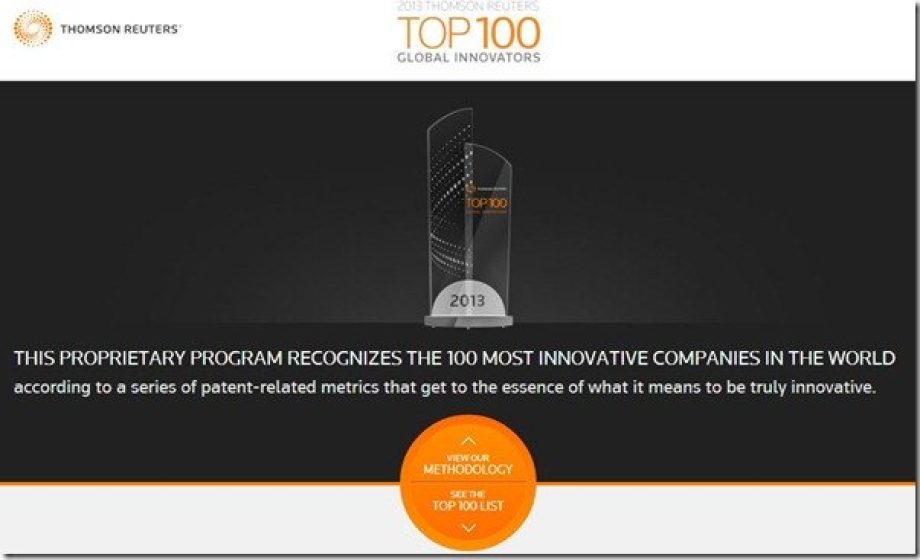
Each year global media and information giant Thomson Reuters conducts an extensive study to identify the most innovative countries in the world. While the US, not surprisingly, came out on top with 45 companies on the list and Japan came in second with 28, France came out on top in Europe with 12 companies making the cut. The 12 companies are: Alcatel-Lucent, Arkemam, CEA, CNRS. EADS, IFP Energies Nouvelles, L’Oreal, Michelin, Safran, Saint-Gobain,Thales, and Valeo.
In compiling the list, Thomson Reuters uses a methodology which is essentially structured around patents. As such, the specific evaluation criteria are:
- Volume: The number of unique innovations generated in the last year. A unique invention is defined as the first publication in a patent document of a new technology, drug, business process, etc. Only those with 100 or more were included
- Success: The ratio of published applications to granted patents over the most recent three years. Essentially assessing how successful a company is at getting the patents
- Global: An index focusing on the number of quadrilateral patents filed (for each innovation) across the Chinese Patent Office, the European Patent Office, the Japanese Patent Office, and the United States Patent & Trademark Office. By investing significant resources to file across all these markets, Thomson Reuters’ model views this as As filing across all these markets is a significant investment, this is an indication that a company places significant value on those pieces of IP
- Influence: How often over a 5-yr period a patented innovation is cited by other companies in their innovation.
As noted, filing for patents can be a costly and complicated affair, so regardless of the country, large organizations with a good amount of resources at their disposal will naturally always lead these lists. It would be interesting to see the patent approach analyzed differently. So instead of volume of patents, it would be interesting to see the impact that it has on disrupting a sector or perhaps creating a new market or perhaps solving a previously thought unsolvable problem.
Another point that would be interesting to explore what actually happens with all these innovations. How many are commercialized for example? What level of success to they have once the are launched on the market? Of course some circumstances do require that scientist, engineers, etc in these firms simply innovate or create without thinking immediately about these things. This approach can sometimes get people to better outcomes. But as the bulk of the organizations on the list are for-profit companies, it is quite likely commercial viability or success comes into play at some point.
Nevertheless, it is good to see a soild number of France’s companies continuing to lead the way on innovation.

